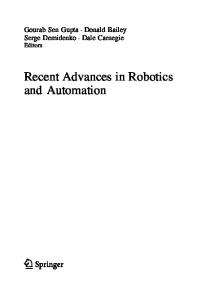A Realistic Model for a Spin Glass
- PDF / 140,975 Bytes
- 2 Pages / 420.48 x 639 pts Page_size
- 24 Downloads / 356 Views
A REALISTIC MODEL FOR A SPIN GLASS JAMES A. GIVEN AND GEORGE STELL Department of Chemistry, State University of New York at Stony Brook, N.Y. 11794, U.S.A.
ABSTRACT We develop exact integral equations satisfied by the spin-spin correlation functions of a realistic spin glass model. This is done by considering the magnetic particles in a spin glass to be bound states of hard sphere 'atoms' and classical 'spins', the former of which are quenched in position, while the latter are allowed to equilibrate. We develop the replica Ornstein-Zernike (ROZ) equations, which are satisfied by the correlation functions of such a partly quenched mixture. We prove that two widely used OZ closures, the Percus-Yevick approximation and mean-spherical approximation are indifferent to quenched disorder, i.e., they give tihe same results for quenched and for fully annealed systems. We extend the ROZ equations to apply to the spin glass by using the proper interaction-site formalism. Preliminary numerical results are discussed. Partly quenched media., in which some of the degrees of freedom are quenched or frozen and some are equilibrated are both common and of great practical importance in studies as different as metallurgy and the theory of complex fluids. If the degrees of freedom that are quenched correspond to the positions of a subset of the particles in the system, the continuum replica method'- can be used to reduce the problem to the study of an equivalent equilibrium system. For such systems we can then use the machinery of liquid-state physics to derive virial expansions, integral equations, etc., for the important quantities in the problem. The spin glass is not yet in this form, however, because the quenched degrees of freedom, i.e., the atomic translations, and the annealed degrees of freedom, i.e., the spin orientations, are properties of the same set of particles. 2 Recently, we have extended the replica method to deal with such systems. In particular, one ca~n treat a spin glass as a fully associated mixture of two species of pseudoparticles called 'atoms' and 'spins', each magnetic particle being a bound state of one particle of each kind. If the 'atoms' are then quenched in position, while the 'spills' are allowed to equilibrate, this gives a model for a spin glass. Thus, in order to derive a full liquid-state formalism for the spin glass, we follow three steps. First we give a new description of the spin glass as a mixture of "spins" and "atoms". Then we use the replica method to provide an effective equilibrium system for the spin glass by replacing this mixture by a fully annealed mixture. Finally we use the interaction-site formalism to "glue" tile atoms and spins back together. The result is a set of integral equations exactly satisfied by the spin-spin correlation functions of the spin glass. The spin-spin interaction is here taken to be
S(.)(;,.. 9)
(t)
where tile exchange coupling J(x) is taken to be a rapidly oscillating function of the separation x of the two spills. Thus, if the atoms are randomly quenche
Data Loading...











